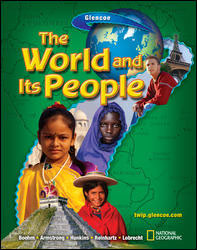
The World and Its PeopleChapter 15: The New Russia and Independent RepublicsChapter OverviewsThe change to democracy and a free market economy has been a challenge for Russians. Other challenges for Russia include increased trust and cooperation among the different ethnic groups and the protection of its land, air, and waterways for future generations. Although Russia has many resources, its economy continues to struggle. As Russia's government has changed, its manufacturing has shifted from heavy industry to light industry. Its urban areas are large and modern, and Moscow is the country's economic, political, and cultural center. Russia is one of the most populous countries in the world and has about 100 different ethnic groups. About three-fourths of Russians live in cities, and because it is very hard to find housing in Russia's cities, many generations may share the same home. The country has a rich tradition of art, music, and literature. The republics of the Caucasus include Armenia, Georgia, and Azerbaijan. They became independent in 1991 for the first time in centuries and since then have struggled to develop their industries and businesses. The Central Asian republics—Kazakhstan, Kyrgyzstan, Tajikistan, Turkmenistan, and Uzbekistan—are Islamic countries. Kazakhstan has rich deposits of oil and other mineral resources. Cotton production in Uzbekistan has had disastrous effects on the environment. Most of Turkmenistan's land is part of a huge desert called the Garagum. Most of the Central Asian countries are poor, and most people are farmers. |  |















